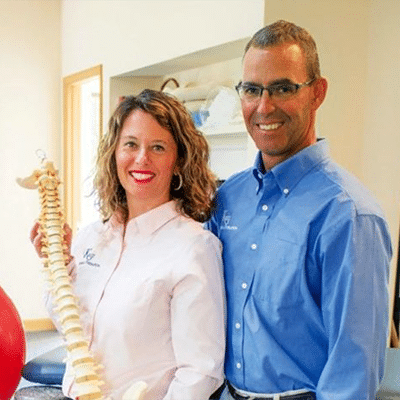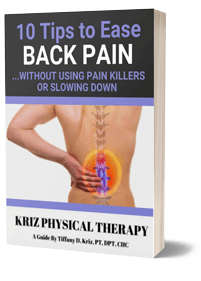Pain can make us do things we never thought we’d do. It may drive us to take painkillers every few hours, turn to ice/cold packs in frustration, or kick us into high gear in the gym or our yoga classes. It may even lead some of us to turn to injections. The bottom line is that pain has a way of turning the world upside down; it can push people into the arms of the strangest ‘cures’ just so that they may be rid of the discomfort and daily agony. But, how often do those solutions and cures really work? If you’re dealing with terrible, debilitating pain, how well is that downward facing dog really coping with treating the issue? My bet is… not very well.
Now, there’s nothing wrong with trying different things and seeing different types of practitioners. In fact, chiropractors, yogis, Pilates coaches, acupuncturists, and even gymnast instructors, all serve an important purpose. Here’s the thing, though: the therapies and activities they offer can only be positive additions to your life if they are done in conjunction with a therapy that tackles the root cause of the problem.
Let me explain. When we sign on to the latest rock climbing expedition, or grit our teeth as we ease into the lotus position, our back pain remains lingering in the background. Similarly, if we pop a few painkillers and sit on the sofa for a couple of hours, that certainly doesn’t mean the pain is gone. On the contrary! All it really means is that you’ve gained a little temporary relief from a permanent, heartbreaking situation.
And I’m afraid to say that the activities you may take for granted- walking, hiking, dancing, and even swimming – could be potentially high-risk ones for those who suffer from back pain. You see, if the root cause of the problem isn’t diagnosed, how can you possibly be sure that partaking in those activities won’t aggravate the problem even more?
The truth is, the problem isn’t necessary abseiling in your local gymnasium, or trying that new aerial acrobatics class – the problem is that the root cause of your problem hasn’t been diagnosed. If you see practitioners based on the fact that you think you ought to move more, ought to stretch more, or ought to be poked and prodded more, then the treatment you get just won’t work.
Here’s why: if the root cause of the problem isn’t correctly diagnosed and treated accordingly, nothing you do will make a real, lasting impact. If, however, you do get the root cause diagnosed and treated according, your new found love for hiking, rowing, or Thai massage, will only be a bonus.
So, let me be clear. Different activities and different therapies do serve their purpose, but the reason you’ve probably not seen many results from your yoga retreat in Napa, or your acupuncture party last week, is that the root cause of your pain remains a mystery. People are very, very good at making pain disappear for a little while, but unless you are a qualified, hands-on professional, treating pain safely and permanently, then positive, lasting result are few and far between.
Now, I know you’re thinking that your friend down the road told you her sciatica was playing up and that you’ve probably got it, too. Maybe your other friend at the pharmacy’s husband recently had surgery and now seems to know all there is to know about back pain. It may even be that you, yourself, have researched pain in your knee, back, neck or shoulder, and are now confident in your ability to self-diagnose. Well, accepting advice off the cuff, and even trusting in YouTube, may cause you some problems down the line… the body is incredibly complex and works via an intricate ballet of balance, coordination, muscle tension, and overall posture. At the end of the day, the chances are that you may not successfully diagnose the root cause of the problem or treat it accordingly, thereby putting yourself smack-bang in the middle of potential further damage, frustration, and pain.
Perhaps, however, you’ve gone to see many different medical doctors, and the advice/treatments you’ve been given haven’t really gotten you too much further than your friend’s from the pharmacy. This can be incredibly frustrating. The thing is, GP’s and other doctors often don’t have enough time to truly diagnose and treat your issue with care. This is not because they don’t want to do it; rather, it means that the system doesn’t afford them that luxury. You haven’t been getting results it may be because you’ve not been able to get the quality treatment and diagnoses you deserve.
Alright, so what do I mean by diagnosing the problem, and surely your local Pilates teacher, acupuncturist, or chiropractor could do that, right? Well, no, not unless he/she is also a qualified, hands-on physical therapist. The thing is, diagnosing the root cause of the problem takes a lot of knowledge, skill, and inherent understanding of the human body. All too often, practitioners make the mistake of diagnosing the wrong problem, thereby prescribing the entirely wrong therapies. With a physical therapist, this doesn’t happen.
I know this because physical therapy stands apart from other therapies in the fact that its practitioners pay particular attention to movement and overall bodily function. They also spend time doing so. Physical therapy is not about pain management… it’s about pain eradication.
It’s also about more than that, in fact. Physical therapy aims to rid you of your pain – yes, of course – but for physical therapists, that’s just one part of the journey. Unlike painkillers and ice/hot packs, physical therapy aims to give you the tools to maintain a pain-free life. This can really only be achieved when the root cause of the problem is diagnosed and treated correctly. In other words, physical therapy ensures that you are equipped to tackle aerial acrobatics, tightrope walking, synchronized swimming, and tadpole fishing with absolute confidence – you face minimal risk simply because you took the right steps at the right time; physical therapy shows you how.
So, if you’re tired of being in pain, trying too many different therapies and practitioners, and still not getting any real, lasting results, then it’s time to get in touch. We’re happy to answer all your questions about how physical therapy can help you, right now. Pain shouldn’t be the norm – get the right answers, the right treatment, and the right form of treatment, today.




